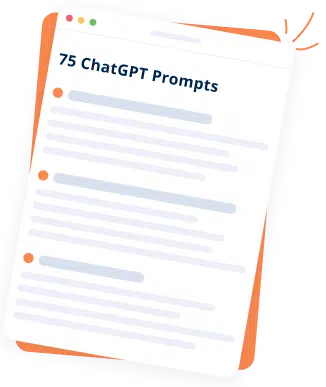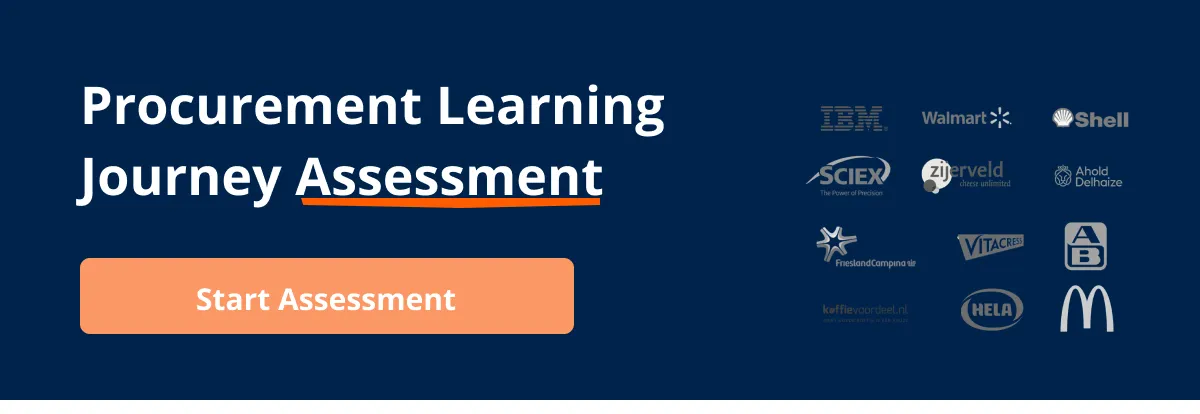ChatGPT & AI in
Procurement Course
Free Preview Lesson

Written by Marijn Overvest | Reviewed by Sjoerd Goedhart | Fact Checked by Ruud Emonds | Our editorial policy
Negotiation Terminology – 50 Definitions You Should Know
Key takeaways
- Familiarity with negotiation terms used in negotiations is essential for effective planning before entering any negotiations.
- Gaining a strategic advantage in negotiation planning requires understanding concepts like Anchoring, BATNA, and Bargaining Zone.
- Successfully navigating discussions can be achieved by developing your communication skills.
If you’re preparing for negotiation it’s important to be prepared. This list contains negotiation terminology and definitions you should know. Actually, you could even use this list as a mental checklist to make sure you’re fully prepared.
Do you want to learn how to prepare the ultimate negotiation strategy for business? Enroll in our Negotiation Course For Procurement Professionals today!
Let’s get started with our negotiation terminology.
Negotiation terminology
To do well in a negotiation career, it’s important to understand negotiation terms. Not knowing them can put you at a disadvantage. Here are some common terms used in negotiation:
1. Acting as a Principle
Negotiators who act as principles represent their interests. If they are negotiating as part of a team, they may include agenda items that represent their interests alone.
2. Anchoring and Adjustment
An opening position, from which a negotiator incrementally moves away (gains or losses) during a negotiation. The choice of an anchor may be based on faulty or incomplete information, and can potentially be misleading.
3. Agenda
A plan for how a negotiation will progress.
4. Aspiration Point
Optimal settlement point that a negotiator hopes to achieve.
5. Avoidance negotiation
A negotiation style where you completely ignore the entire negotiation.
6. Bargain
To discuss the conditions of the agreement.
7. Bargaining Zone
The gap between the respective resistance points of each party.
8. BATNA (Best Alternative To a No Agreement)
This is your backup plan.
9. Bottom Line
The most significant factor.
10. Buy-in
To influence the other party to agree.
11. Calibrated questions
These are questions to calibrate the thinking of the other party.
12. Compromise
To meet the other party halfway.
13. Concession
To give into something to reach an agreement.
14. Concluding
To have a recap of the main points you have agreed or disagreed upon.
15. Consistency Principle
The need to appear consistent in beliefs, feelings, and behaviors, not only to others but to ourselves, too.
16. Counter Proposal
An alternative solution is when there is an agreement on the one that is already presented.
17. Distributive Negotiation
A negotiation technique and/or type that seeks to gain at the opponent’s loss. Any situation in which one person’s gain is exactly equal to the opponent’s loss is considered distributive. Haggling over $100 is an example of distributive negotiation.
18. Deadlock
The point of no agreement. Simply put, the point of the discussion is a dead end.
19. Dyadic Negotiation
A negotiation between two persons, as opposed to negotiations in which more parties are involved.
20. Dynamic Silence
To use silence as a tool to let each skill sink in and give the other party the opportunity to respond.
21. Haggling Strategy
Haggling is an approach to bargaining relentlessly for the purpose of getting more or giving less without concern for the relationship.
22. Highball
To ask for a lot more than you think the other party will agree to offer you.
23. Integrative negotiation
A negotiation style characterized by the intention of a win-win for both parties.
24. Label
It is the verbal observation of the emotion displayed in the negotiation.
25. Leading Questions
These are questions designed to generate only one possible answer.
26. Leverage
This is something that gives you power in a negotiation.
27. Limited Authority
A negotiating gambit whereby a negotiator says he cannot make a decision and must resort to a higher authority.
28. Linkage Effect
When one deal point of a negotiation is attached to another.
29. Lowball
You offer less than what you think is acceptable.
30. MDO
It is a short term for the most desired outcome. It is usually called the ideal situation.
31. Mirror
A communication technique where you repeat the last three to five words or a portion of what the other party has just said.
32. Negotiating Gambit
A strategy in negotiating that should be avoided because it damages relationships.
33. Negotiating Roles
Different people in a negotiating team can have different roles such as primary negotiator, Kinetic and paralanguage expert, etc.
34. No-oriented questions
These are questions that are designed to draw out “no’ as an answer from the other party.
35. Non-verbal cues
Body language gives away how a person is feeling and what s/he is thinking. This is closely related to kinesics.
36. Offer
To provide a term or condition for an agreement you are willing to be bound to.
37. Package
An offer that has many elements.
38. Paralanguage
Variations in speech – pitch, loudness, tempo, tone, duration, laughing, crying – how things are said.
39. Position
Statement of what a person/party wants in a negotiation.
40. Reach a Consensus
To agree on a matter that you first disagreed upon.
41. Reciprocity Principle
Occurs when a negotiating party feels obligated to return in kind what the other side has offered or given them. This principle might result in one side making a concession because the other side has done the same.
42. Reservation Value
For sellers, this is the minimum amount they are prepared to accept. On the other hand, it is the maximum amount that a buyer is prepared or able to pay.
43. Resistance Point (RP)
The point beyond which a person/party will not go. The lower limit of the range of acceptable negotiation outcomes.
44. RFX
It is the process of using formal requests for proposals, information, and price quotes.
45. Summary
The synopsis of the negotiation.
46. Tactics
These are measures taken to turn a negotiation to your advantage.
47. Ultimatum
A threat of no agreement. Commonly expressed as “take it or leave it.”
48. Walk-out
This is a situation where a party leaves the negotiating table and refuses to return.
49. Winner’s Curse
Occurs when your aspiration point is too low. You accept a deal and wonder whether your opponent would have given you a better deal had you been more persistent.
50. Zone of Possible Agreement (ZOPA)
This is the range of reservation values between each party in the negotiation. Also, It is the overlap area in which a party is willing to pay.
Procurement Expert’s Insights About Negotiation Terminologies
For this article, we asked an experienced procurement expert to share her insights about negotiation terminologies.
Hilce Vallenilla
Procurement Manager, Sanofi
LinkedIn Profile: linkedin.com/in/hilce-vallenilla
1. Can you give us examples of more terms in negotiation?
- E-Auction: Electronic auction, with different models, such as Japanese, Sweden, Inverse, etc. This process used to be performed after the RFX and provided after some agreed rules, better prices, or conditions
- TCO: Total cost ownership, which is the total cost of a product or service owned and is needed to compare the scenarios before an RFX result.
2. How did you learn the terms in negotiation?
During my professional journey and also, Researched, researching and exchanged experiences with my colleagues.
3. What tips can you give procurement professionals to learn about procurement terminologies?
Do not stop researching and updating your knowledge. Benchmarking with other companies is very useful.
Conclusion
In summary, knowing negotiation terms is crucial for successful deal-making. These terms help you plan strategies, communicate effectively, and handle team dynamics.
Understanding styles, power dynamics, and resolution techniques gives you an edge in negotiations. It’s like having a toolkit for navigating different aspects of the negotiation process.
So, whether it’s recognizing a good deal or managing potential challenges, being familiar with negotiation terminology is key to achieving positive outcomes
Frequentlyasked questions
What are negotiation terminologies?
Negotiation terminologies are specific words and concepts used in the context of negotiations.
Why is it important to learn negotiation terms?
Learning negotiation terms is crucial for anyone involved in negotiations as it provides a common language and framework. Without this knowledge, individuals may face challenges in understanding and navigating the negotiation process.
How does knowledge of negotiation terms contribute to success in negotiations?
Knowing negotiation terms allows individuals to strategize effectively, communicate clearly, and understand the dynamics of the negotiation process. It empowers negotiators to make informed decisions and reach favorable outcomes.
About the author
My name is Marijn Overvest, I’m the founder of Procurement Tactics. I have a deep passion for procurement, and I’ve upskilled over 200 procurement teams from all over the world. When I’m not working, I love running and cycling.


